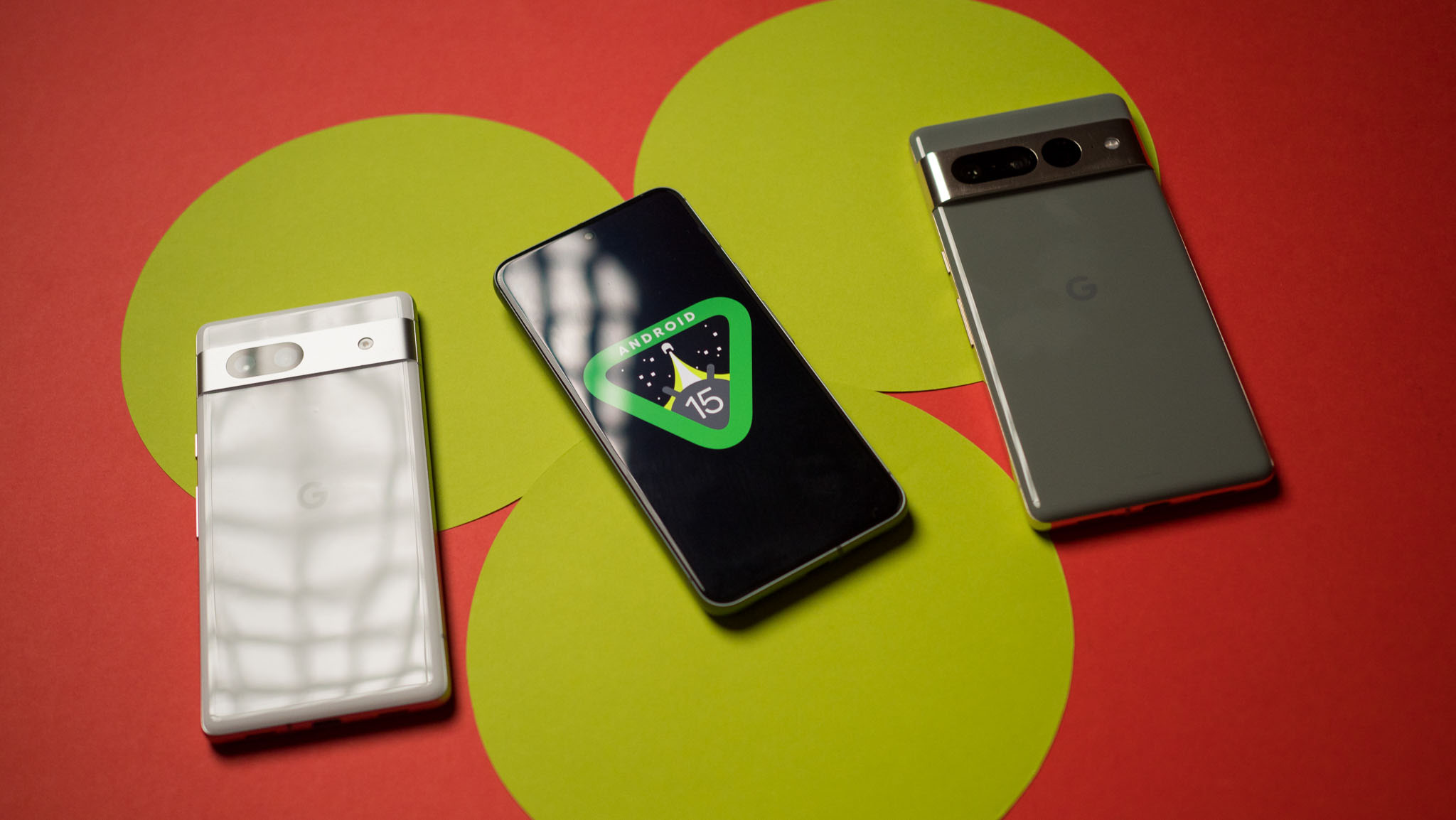
After months of testing and several beta builds, Android 15 has finally hit stable release. Google rolled out the stable build to Pixels on October 15, and other manufacturers are now starting to roll out their own versions based on the stable build.
While there wasn't a lot of excitement around Android 14, there's plenty of new stuff in Android 15. Google is introducing welcome tweaks to navigation with predictive back gestures, updated notifications, and a suite of foldable features. I tested every beta build of Android 15 and started using the stable release as soon as it became available, and this is what you need to know about the latest version of Android.
Android 15 release timeline
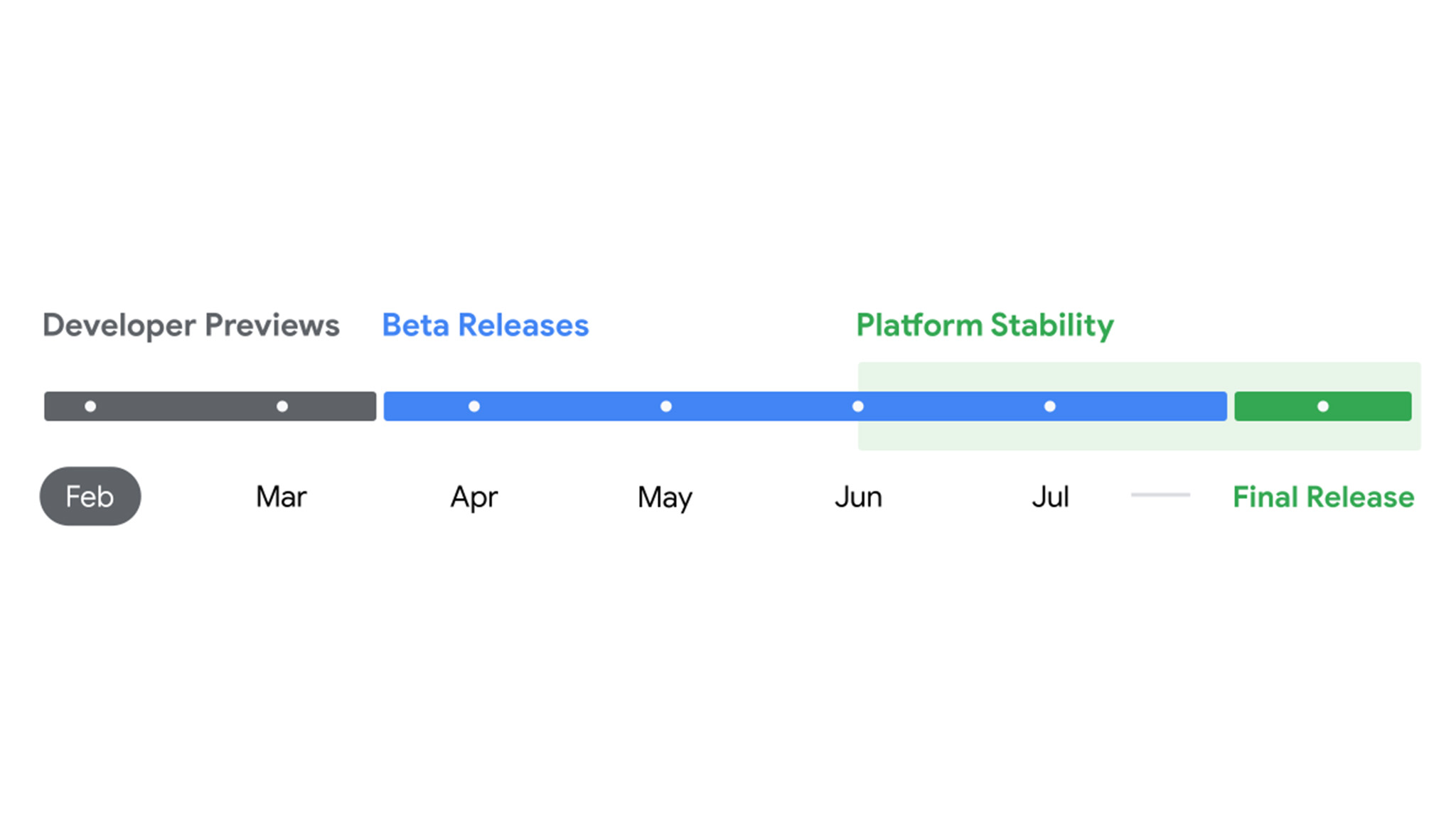
Google was originally slated to release Android 15 in Q3, the stable build was pushed back. Thankfully, the stable Android 15 release is now available, and as of October 15, eligible Pixel devices can install the update.
While Google doesn't use codenames in public-facing documentation, all Android releases still have internal dessert codenames, and Android 15 is designated Vanilla Ice Cream. Like previous years, you can install the beta on Google devices, but the Pixel 5 series isn't eligible — only the Pixel 6 and upwards will pick up the update. Here's the list of devices:
- Pixel 6
- Pixel 6 Pro
- Pixel 6a
- Pixel 7
- Pixel 7 Pro
- Pixel 7a
- Pixel 8
- Pixel 8 Pro
- Pixel 9
- Pixel 9 Pro
- Pixel 9 Pro XL
- Pixel 9 Pro Fold
- Pixel Fold
- Pixel Tablet
The Android beta program debuted on the best Android phones, with most major manufacturers getting in on the action. That said, the devices listed below will switch over to their manufacturer's skins — based on Android 15 — over the coming weeks. As such, the list below serves as a good guide to which non-Pixel devices will get the Android 15 update ahead of other phones:
- Honor: Honor Magic 6 Pro, Honor Magic V2
- Xiaomi: Xiaomi 14, Xiaomi 13T Pro, Xiaomi Pad 6S Pro 12.4
- OnePlus: OnePlus 12, OnePlus Open
- OPPO: Find X7
- Vivo: Vivo X100
- iQOO: iQOO 12
- Nothing: Nothing Phone 2a
- Realme: Realme 12 Pro+ 5G
- Lenovo: Lenovo Tab Extreme
- Sharp: Sharp Aquos sense8
- Tecno: Tecno Camon 30 Pro 5G
As usual, Samsung devices aren't on the list, and ASUS is a notable omission. If you have a Galaxy phone, you will need to wait a little while; the One UI 7 beta is now rolling out, and it will be a few weeks before the stable update is available.
Theft Detection Lock secures your device data
Google is leveraging AI to safeguard your device in the event of a theft with a feature dubbed Theft Detection Lock. Basically, the feature relies on your phone's accelerometer to determine if someone has snatched your device and is trying to run, bike, or drive away, and it immediately locks the device.
Remote Lock allows you to remotely lock your device, and it works on conjunction with Find My Device. Google is adding additional measures to deter thieves accessing sensitive information, such as authentication when removing a SIM card or disabling Find My Device.
Private Space gives you an additional layer of security
This feature has been around on several Chinese skins, and I use it quite a bit whenever I'm testing a phone running ColorOS. And with Android 15, Google is integrating Private Space into Android, so it will be available on all devices.
The feature allows you to lock sensitive apps locked away in a separate section that needs an additional layer of authentication. Once locked, these apps don't show up in the app drawer or the overview menu, and they're squirreled away inside a new user profile. Any data that's generated — photos, videos, and documents — is also hidden.
Keyboard vibration gets its own toggle
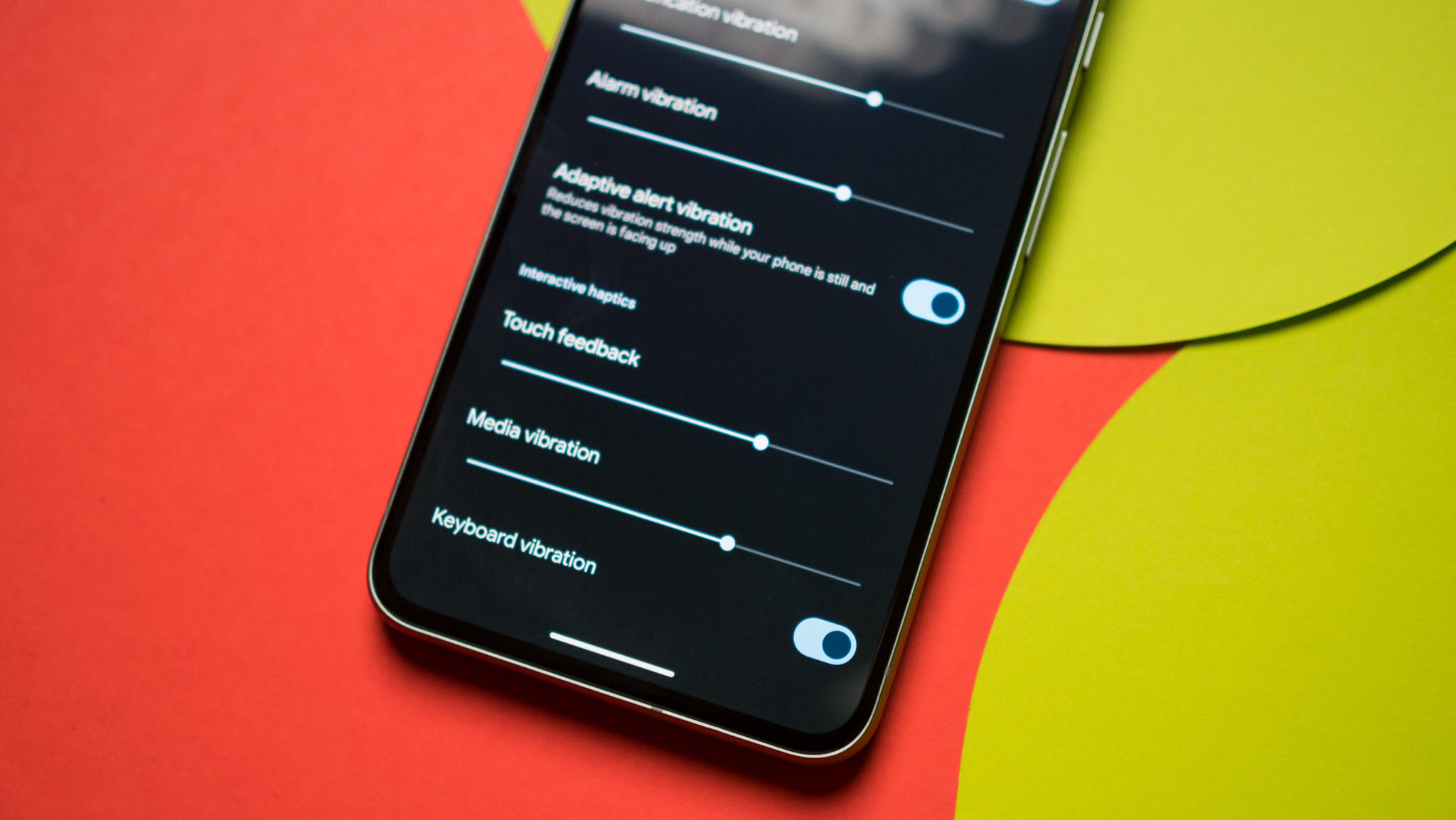
Android 15 is adding a system-wide toggle to enable or disable keyboard vibration. You could do this previously by going into a keyboard's settings and toggle the feature individually, but the option to do so at a system-wide level that works across keyboards is a good addition. Google is also integrating a slider that lets you adjust the intensity of haptic feedback, similar to what OPPO does with ColorOS.
The brightness slider vibrates now
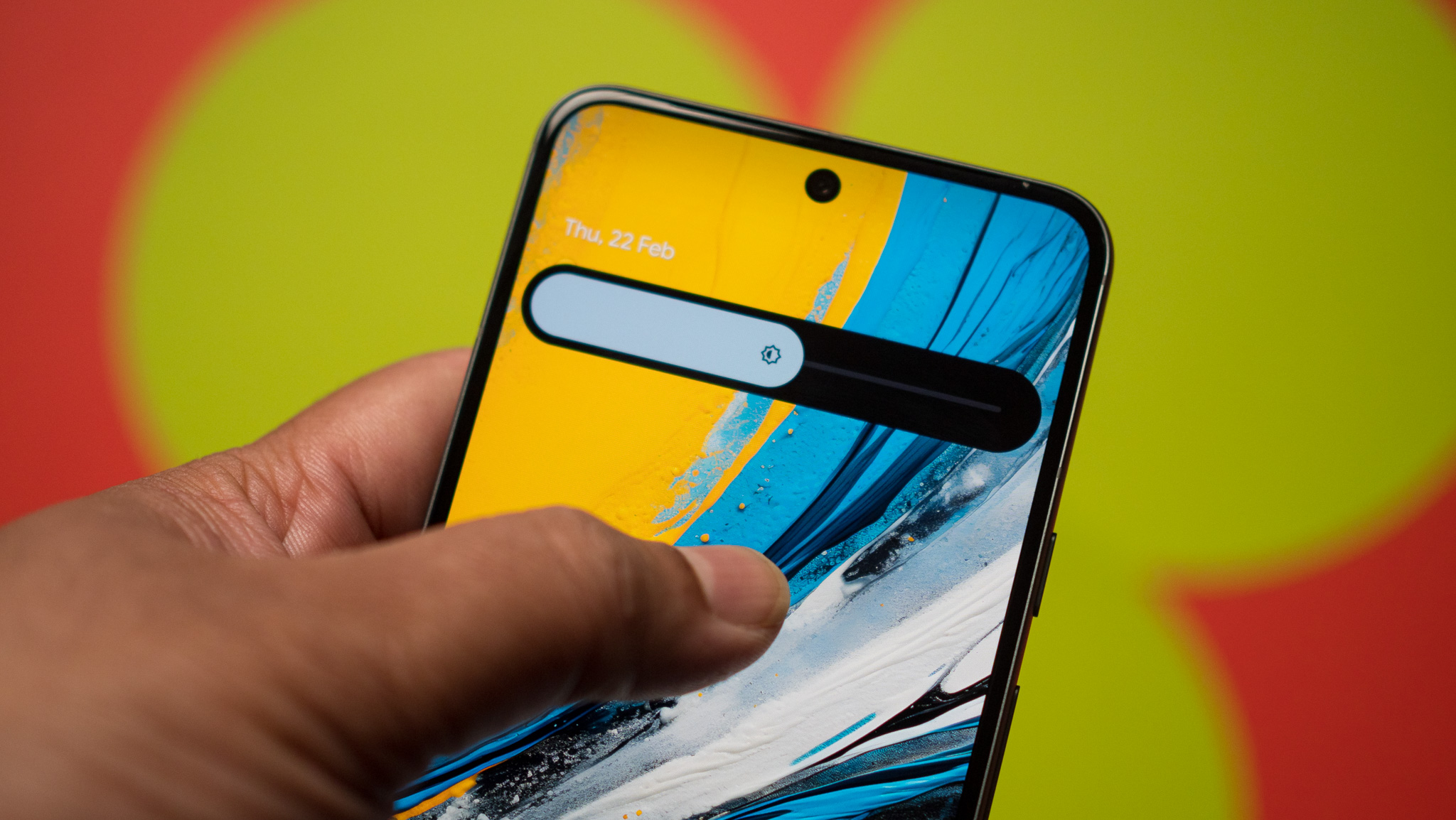
In a bid to bring better feedback across the system, Google is adding haptic feedback to the brightness slider in Android 15. The effect is very subtle — it's not on the same level as the nav gesture intensity, but it is still great that you get some amount of feedback when adjusting the brightness.
Partial screen recording lets you share only what's needed
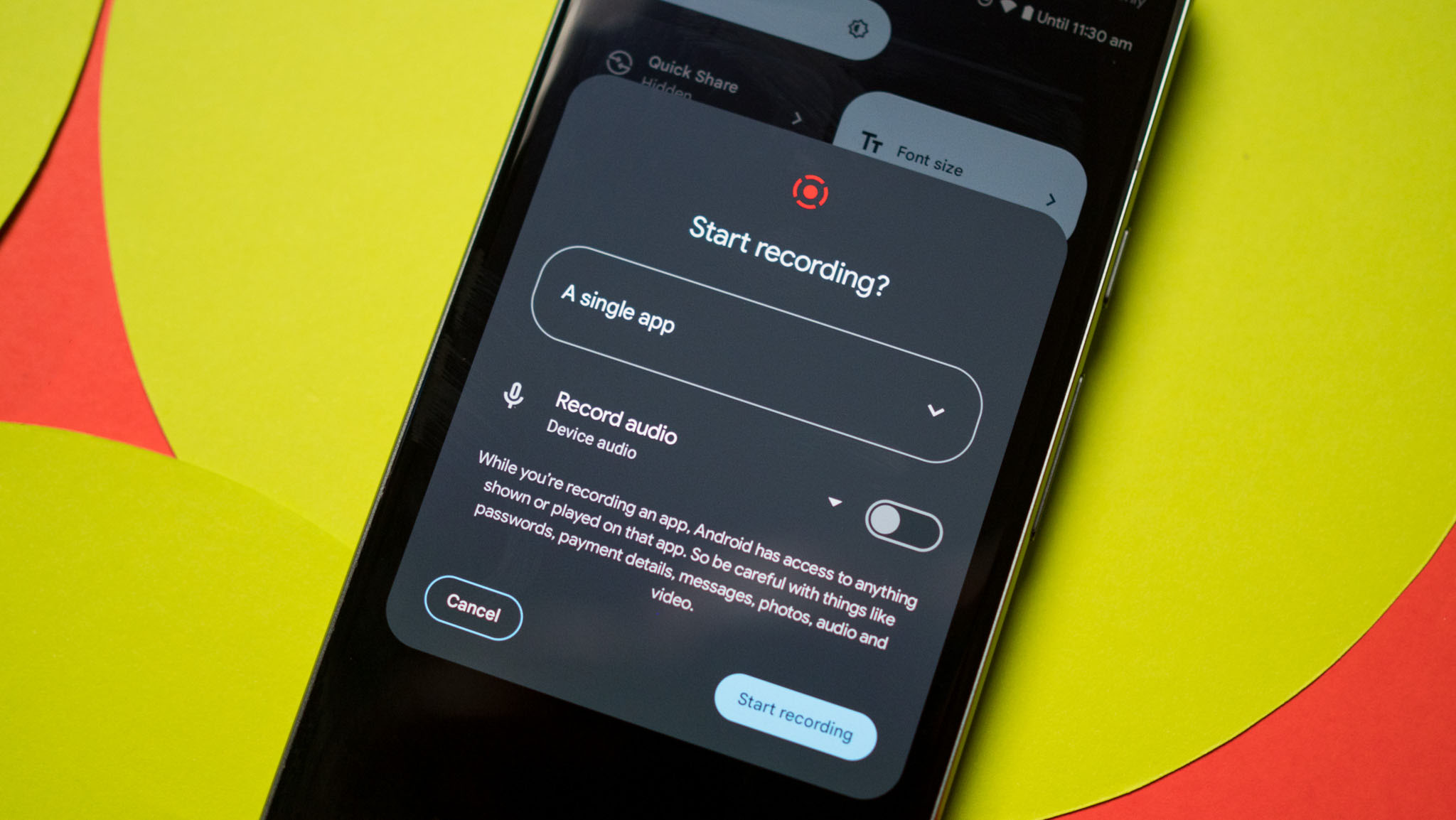
Google took its sweet time integrating a screen recorder into Android, and by the time it added it, all other brands had their own take on the feature, which was usually better. Anyway, Android 15 is getting an update that lets you take partial screen recording. Instead of recording the entire screen by default, you can now select to record an individual app, and it won't show the rest of the screen and notifications.
Bluetooth tile is actually useful
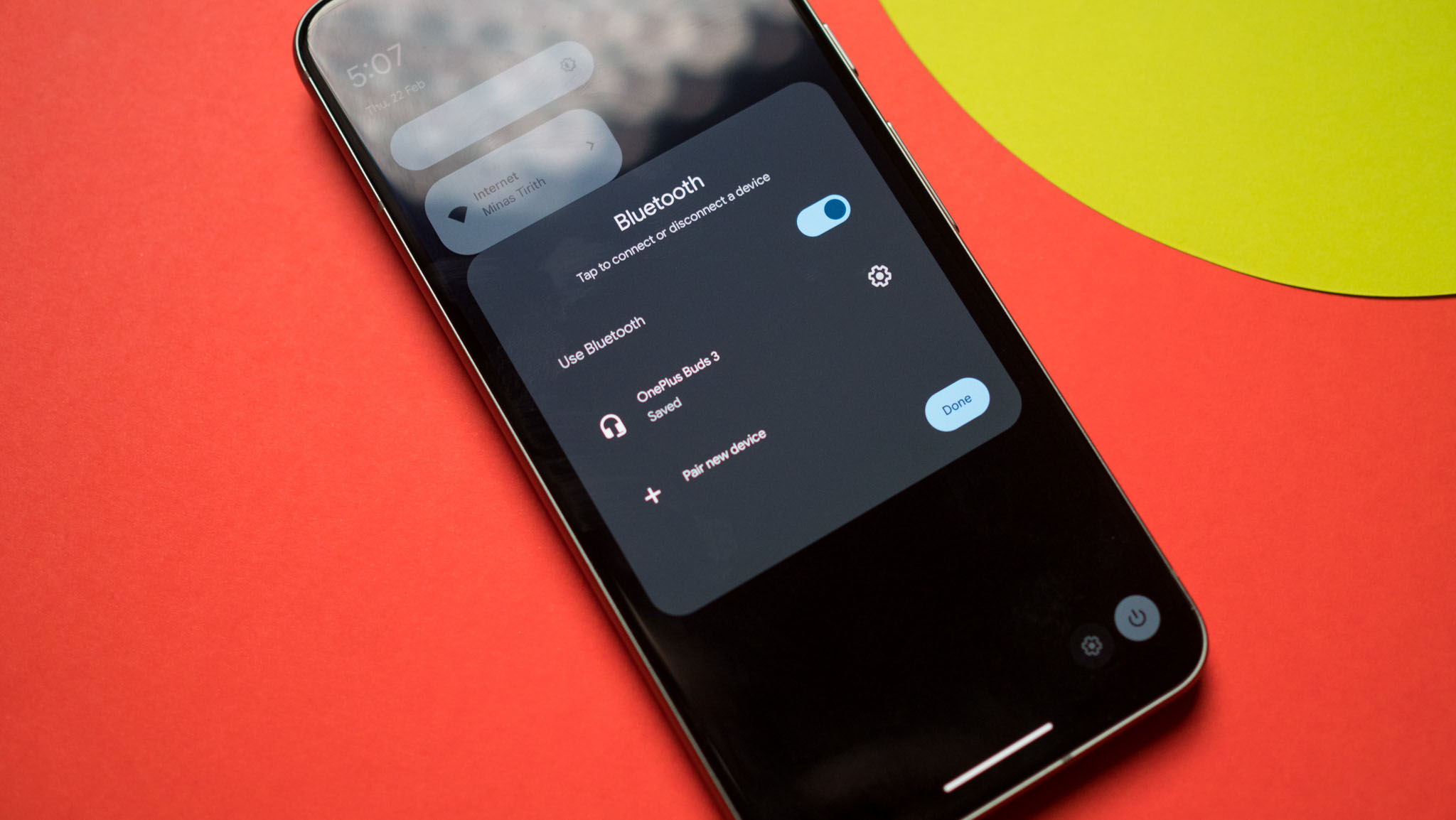
Google moved the Wi-Fi and cellular connection tiles to a single tile called Internet, and it is a constant source of frustration as it adds another step if I just want to toggle my home internet on or off. By contrast, the Bluetooth tile — which could have actually benefitted with this functionality — was a standard toggle that turned the Bluetooth radio or on off.
Thankfully, Google is addressing this issue in Android 15, and a short press on the Bluetooth tile now pulls up a dialog box similar to the Internet one — you get to see your paired devices, and you have the ability to easily switch between devices, and there's the option to toggle Bluetooth connectivity. If you want to pair a new device, hitting the + icon at the bottom of the dialog box to pull up the Bluetooth settings page and connect a new device.
Samsung's One UI and Nothing OS already use this system, and it's good to see Google baking it into Android.
Android 15 enables edge-to-edge displays
With Android 15, apps can show content that covers the entire width of the display, so if you have the gesture recognition bar enabled at the bottom of the page, you'll see content on either side of it. This should make content look a little more immersive — particularly when you're using a tablet.
Better continuity and multitasking on foldables
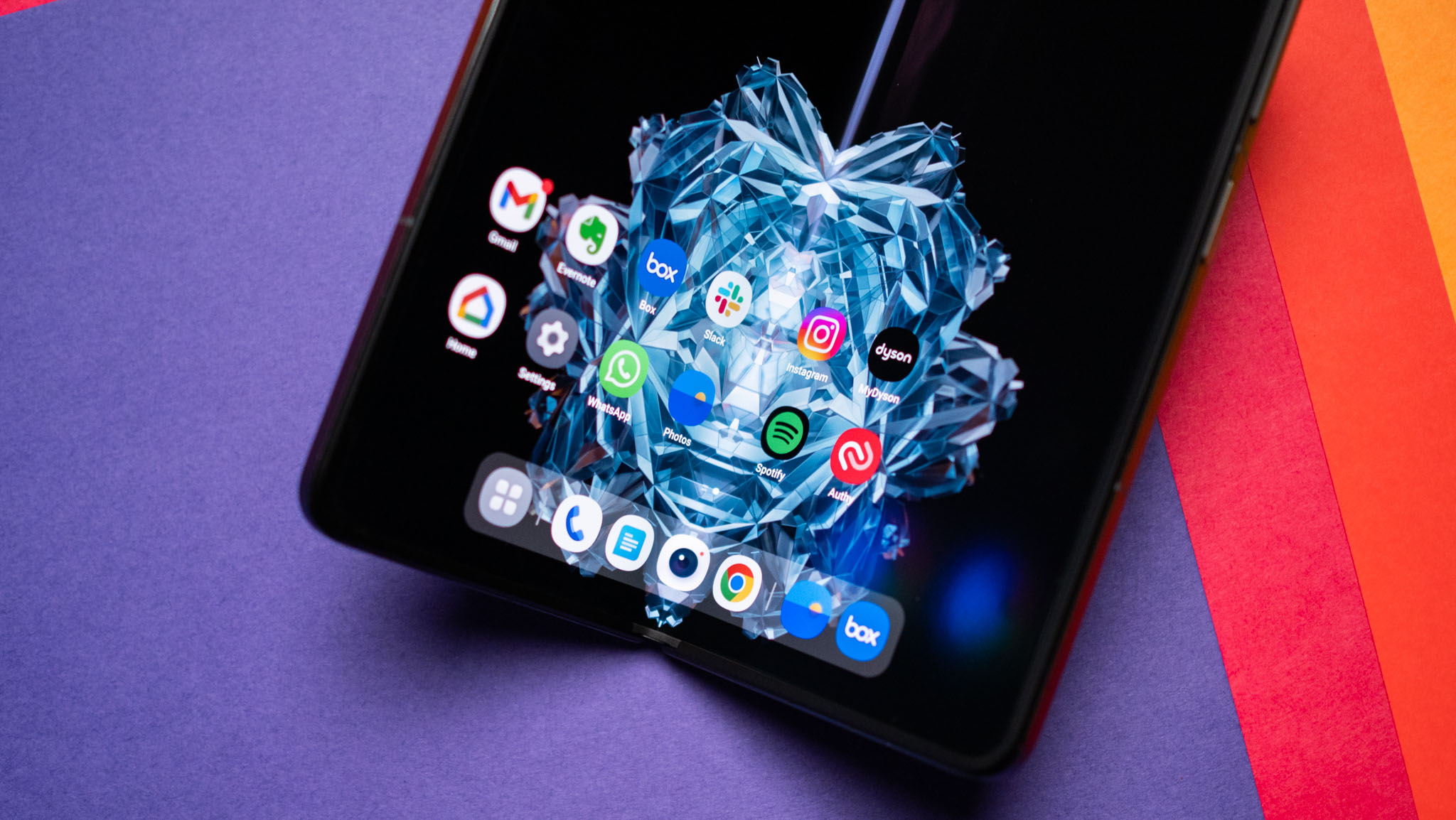
Google is lifting a feature that debuted on the OnePlus Open that switches whatever action you're doing on the inner screen to the cover screen when you fold a device. This is a very useful feature, and other foldables like the Honor Magic V2 also have it. With it being integrated into Android 15, we should see it heading to even more foldables in the future.
Multitasking is also getting an upgrade, and you can now save split-screen app combinations to launch both at the same time.
Android 15 should have better optimization
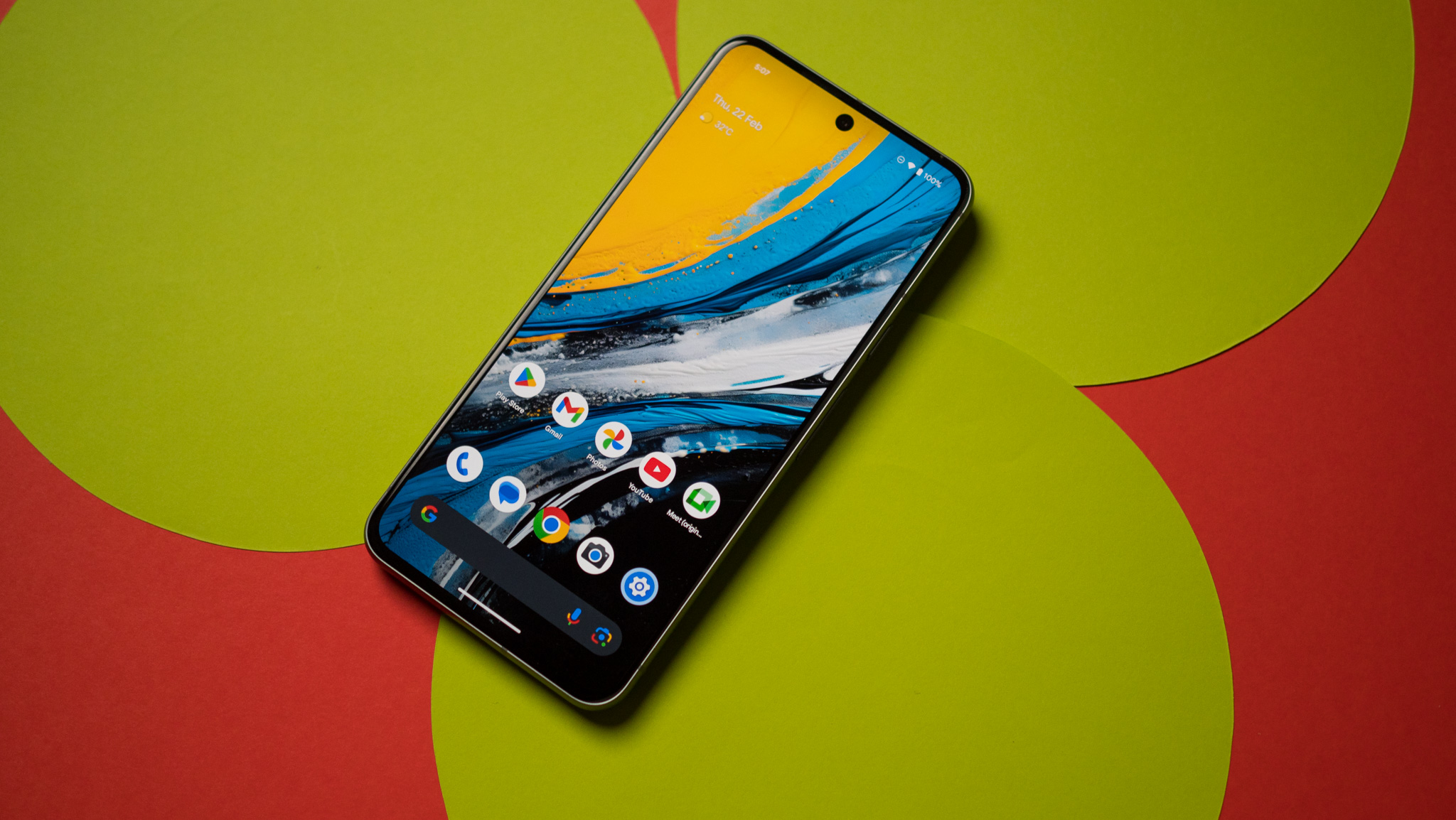
Google is making it easier for game and app makers to directly access the hardware, and the Android Dynamic Performance Framework consists of a set of APIs that allow better optimization, and in Android 15, Google is introducing a power-efficiency mode that's designed for "long-running background workloads." This is to ensure any background apps don't utilize more system resources than necessary.
In a similar vein, Google is rolling out new thermal thresholds that should make a difference with throttling. Even the latest phones with powerful hardware struggle with throttling issues in demanding titles, and I'm excited to see if this change makes a difference in real-world use.
And as for the interface as a whole, Google is adding smoother transitions, so Android 15 should feel fluid if you're on a device that has a high refresh panel.
Android 15 rolls out an HQ webcam mode
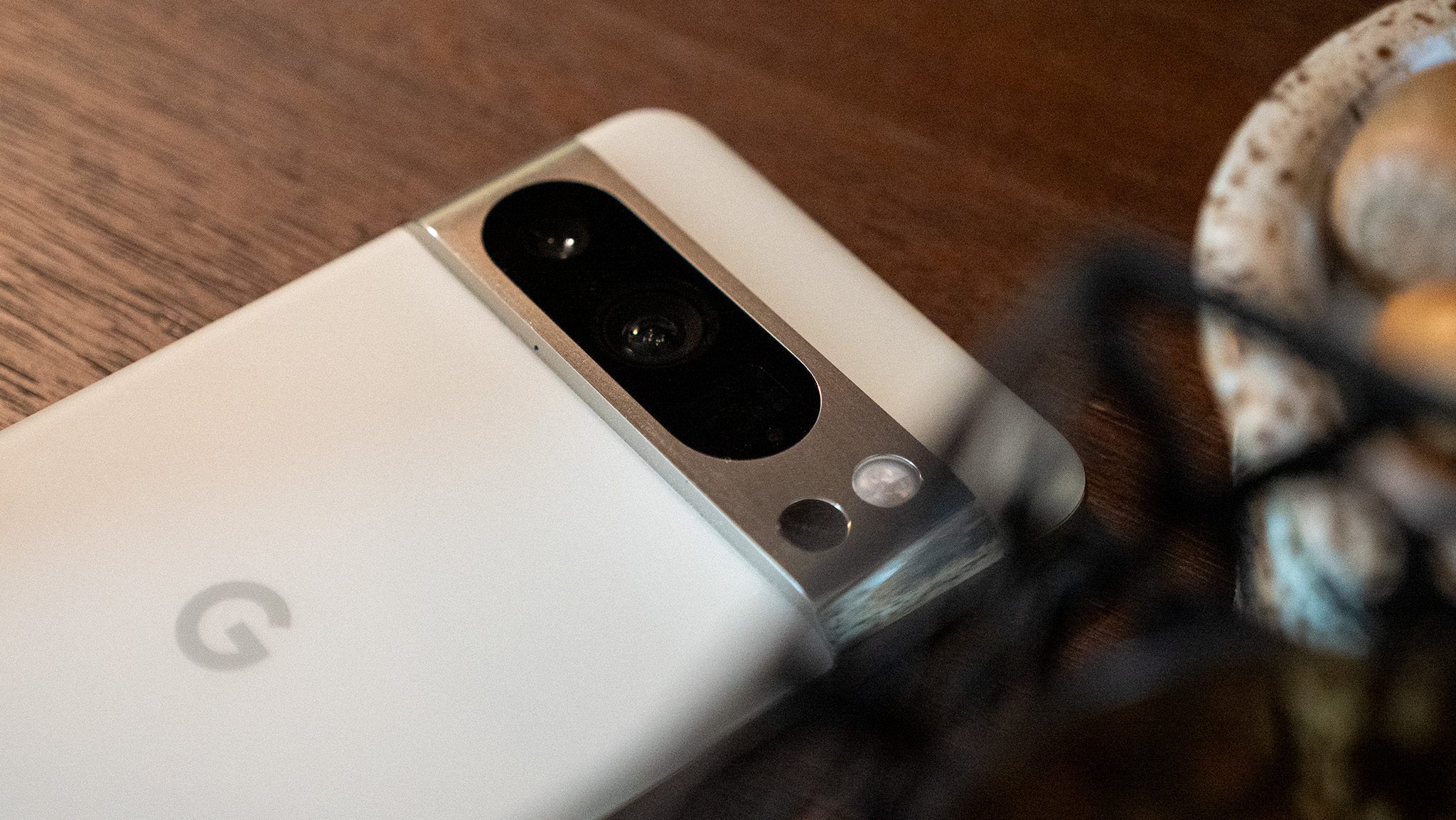
You can use your phone as a webcam, and with Android 15, Google is rolling out an HQ mode that makes a difference to video quality. There's now a toggle that lets you enable HQ mode, and it offers better detail resolution. The only issue is that your device will get noticeably warm, but it is a nice addition nevertheless
Android 15 has an always-active taskbar
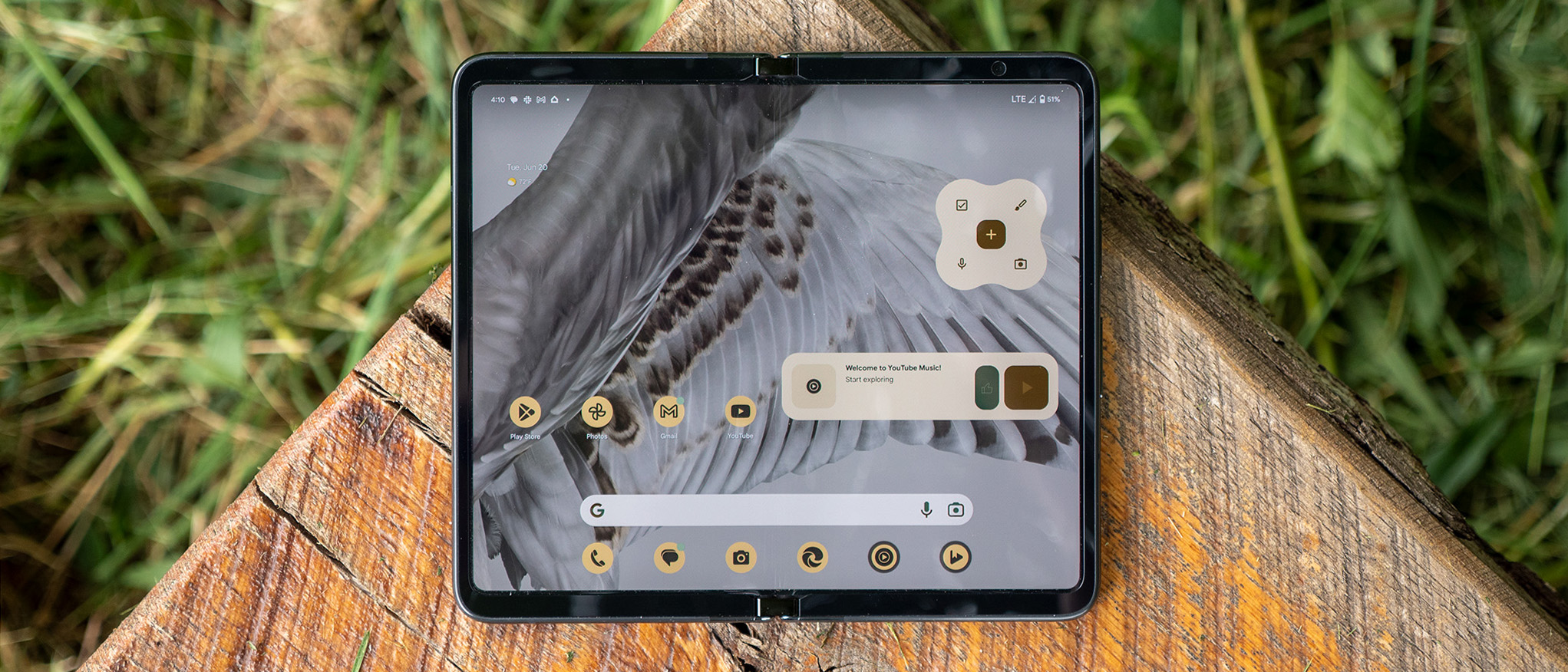
Android 15 DP2 brings a new feature to the Pixel Fold and Android tablets that enables a persistent taskbar at the bottom of the screen. Other brands offer this feature as standard on their foldables, so it is good to see Google adding it natively in Android 15.
Android 15 is now available
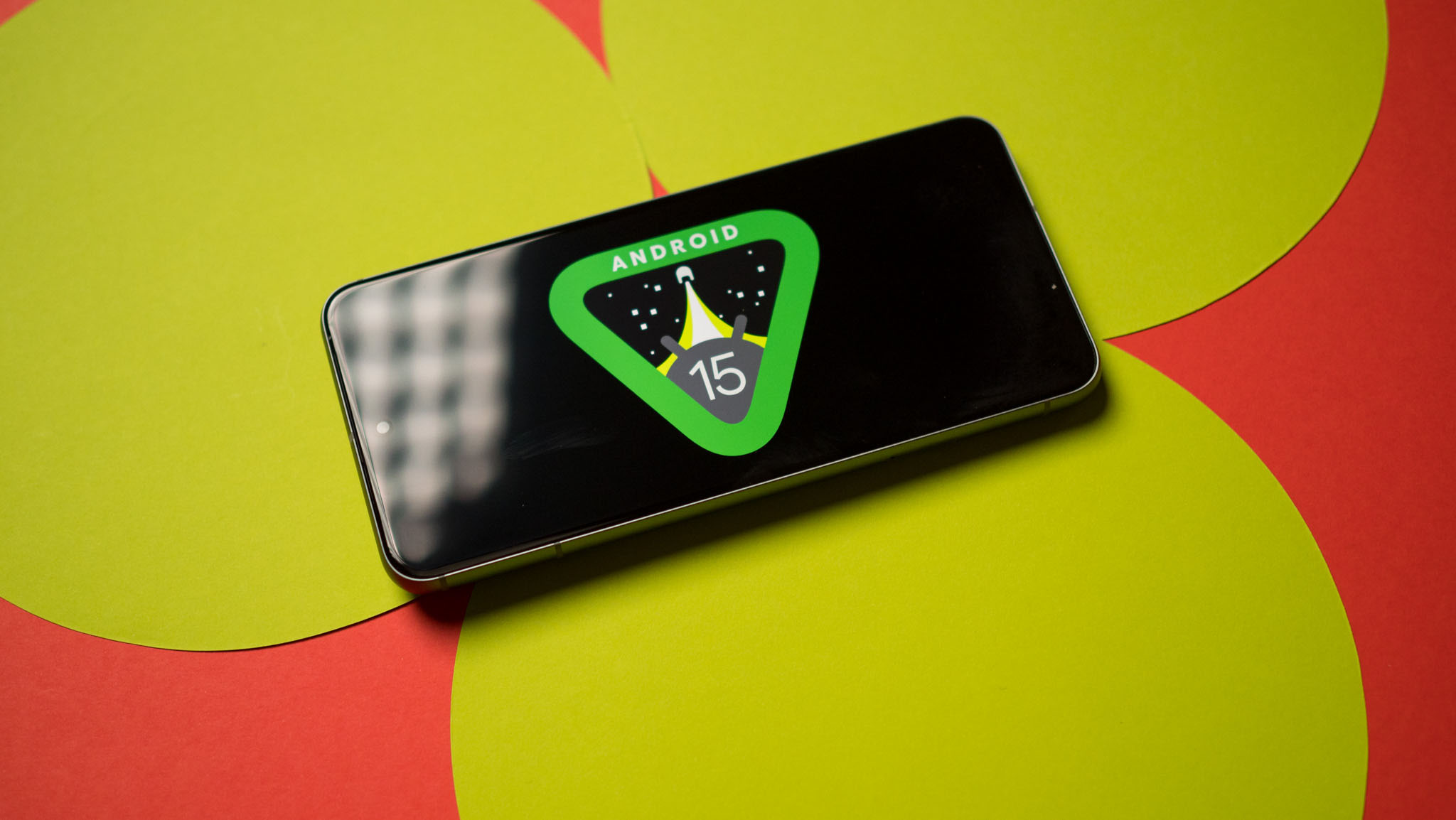
After an extensive beta program, the stable Android 15 is finally rolling out to Pixels, and slowly making its way to other devices.
The OnePlus 12 is on the stable OxygenOS 15 build based on Android 15, Nothing OS 3.0 is now available to the manufacturer's devices, and Samsung's One UI 7 public beta is in full swing right now. While most 2024 phones will only receive the Android 15 update in Q1 2025, a good chunk of flagships have made the switch to the latest version of Android, and that's always good to see.
The Pixel 9 Pro XL has considerable upgrades over its predecessors, and the build quality is on par with the best phones. It's also smoother in daily use, doesn't lag, and has better battery life. Oh, and the AI features are pretty good too. If you need Android 15 right now and don't want to wait, this is the phone to get.







